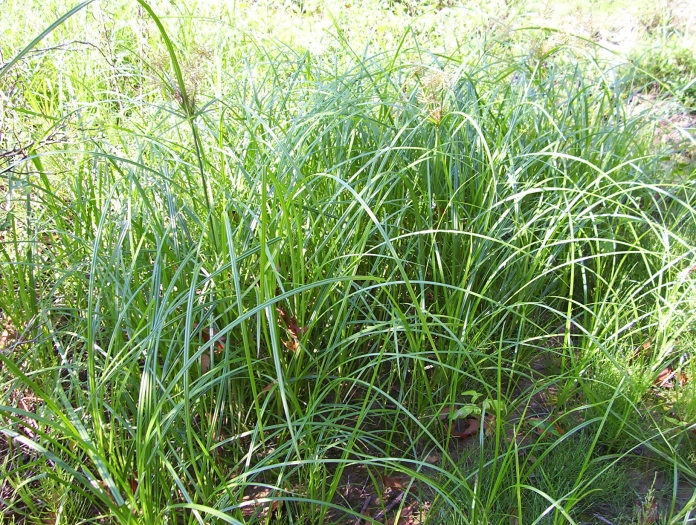Red-Rooted Flatsedge
(Cyperus erythrorhizos)
Red-Rooted Flatsedge (Cyperus erythrorhizos)
/
/

Summit Metro Parks
CC BY 4.0
Image By:
Summit Metro Parks
Recorded By:
Copyright:
CC BY 4.0
Copyright Notice:
Photo by: Summit Metro Parks | License Type: CC BY 4.0 | License URL: http://creativecommons.org/licenses/by/4.0/ | Rights Holder: Summit Metro Parks | Publisher: iNaturalist | Date Created: 2004-09-01T10:55:50-07:00 |

























Estimated Native Range
Summary
Cyperus erythrorhizos, commonly known as red-rooted flatsedge, is a perennial herb native to a variety of wetland habitats including marshes, wet meadows, pond margins, and along streams and rivers across much of North America, from Maine and Ontario to British Columbia and extending to southern Mexico. It typically grows at low elevations and can reach up to one meter in height, though it is often shorter. The plant features long, grass-like leaves that are clustered at the base, giving it a tufted appearance. The inflorescence is characterized by clusters of light greenish-brown to reddish-brown spikelets, which are not particularly showy but add texture to the wetland landscape.
Red-rooted flatsedge is valued for its ability to stabilize soil and filter water in its native wetland environments. It is often used in rain gardens, bioswales, and naturalized areas where its adaptability to fluctuating water levels is beneficial. This sedge prefers full sun to part shade and thrives in wet, poorly drained soils. While it is not commonly used in formal garden settings, it can be an important component of wetland restoration projects. Cyperus erythrorhizos is generally low-maintenance, but it can spread aggressively in ideal conditions, which should be considered when planting.CC BY-SA 4.0
Red-rooted flatsedge is valued for its ability to stabilize soil and filter water in its native wetland environments. It is often used in rain gardens, bioswales, and naturalized areas where its adaptability to fluctuating water levels is beneficial. This sedge prefers full sun to part shade and thrives in wet, poorly drained soils. While it is not commonly used in formal garden settings, it can be an important component of wetland restoration projects. Cyperus erythrorhizos is generally low-maintenance, but it can spread aggressively in ideal conditions, which should be considered when planting.CC BY-SA 4.0
Plant Description
- Plant Type: Grass
- Height: 1-3 feet
- Width: 1-2 feet
- Growth Rate: Moderate
- Flower Color: N/A
- Flowering Season: Summer, Fall
- Leaf Retention: Deciduous
Growth Requirements
- Sun: Full Sun, Part Shade
- Water: High, Aquatic
- Drainage: Standing, Slow
Common Uses
Erosion Control, Low Maintenance, Water Garden
Natural Habitat
Various wetland habitats including marshes, wet meadows, pond margins, and along streams and rivers
Other Names
Common Names: Redroot Umbrella-sedge, Red-rooted Cyperus, Redroot Nutgrass, Red-Rooted Nutsedge, Red-Rooted Umberella-Sedge
Scientific Names: , Cyperus erythrorhizos, Chlorocyperus erythrorhizos, Chlorocyperus erythrorhizus, Cyperus chrysokerkos, Cyperus cupreus, Cyperus erythrorhizos var. cupreus, Cyperus erythrorhizos var. halei, Cyperus erythrorhizos var. infirmus, Cyperus erythrorhizus var. cupreus
GBIF Accepted Name: